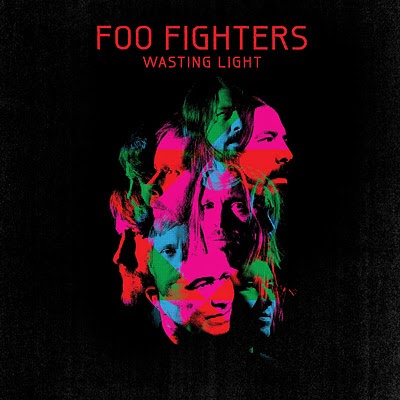
Album Review: The Foo Fighters - "Wasting Light"
One of the pitfalls of reviewing the Foo Fighters is that because of their long-standing popularity and success, it is all too easy to slip into the circular logic of "it's good rock and roll because it's the Foo Fighters, and it's the Foo Fighters because it's good rock and roll."
That said, it might be hyperbole to say that "Wasting Light" is the paramount Foo Fighters release since the self-titled debut in 1995, but the new album certainly exceeds the musical accomplishments of any other FF release in the new millennium.
The musical community has been abuzz concerning the reunion of Dave Grohl, Krist Novaselic and Butch Vig, which is prematurely jumping the gun. While that may be three-quarters of the roster that created "Nevermind" and changed pop rock forever, the biggest quarter (if you'll pardon the misuse,) is still missing, and will never return. While Vig’s production of Grohl’s vision seems comfortable, and the trio’s reunion on the emotional “I Should Have Known” is tight, anyone who hears a Nirvana revival on "Wasting Light" is hearing what they want to hear.
The other facet of "Wasting Light" that has been the source of much publicity is the Foo Fighters quite literally recording the album in a garage with analog equipment. The resultant product is a warm, soft-edged sound that curries memories of tube amplifiers and the roots of rock and roll. It's a subtle influence, but gives "Wasting Light" a feeling of intent that precise, unemotional, calculating digital equipment can't provide.
While Grohl touted this album as being his band’s heaviest, one can’t help but notice that Grohl’s time with Them Crooked Vultures may have influenced his writing this time around. Hit single “Rope” features TCV-style layering and cadence, complete with level, almost disinterested vocals. The same could be said for fiery kick-starter “Bridge Burning,” which is possessed of a full-bodied guitar line paired with a pointed lead riff.
Pop-y without being pandering, “Wasting Light” is an up-tempo but sensibly simplified walk through the greater mores of classic rock and roll, magnified by the sweat and earnest effort of Grohl and company. Worth noting is the inclusion of Pat Smear, who is “officially” returned to the band after a long absence. It’s likely more than a coincidence that his return to the studio marked the Foo Fighters decreasing the artfulness of their songs and increasing the pure rock fury, which is most noticeable on cuts like “White Limo.”
Whether it be the fifties throwback tune “Back and Forth,” or the nineties choral rocker “Miss the Misery,” the Foo Fighters draw from all sixty years of rock history to create “Wasting Light,” and the final mix is a study in rock for rock’s sake, without adornment or maybe even cause.
The down side of “Wasting Light” is that the album does get a little too doughy in the middle, relying on pretty but fluffy songs like “Dear Rosemary,” “Arlandria,” and “These Days.” Even “Walk,” as album closer has a large sound but lacks the same kind of stage presence as some of the other cuts. It should be said that those four songs are not bad; on the contrary, they are well composed and solidly arranged. However, while they are individually pleasant to listen to, the album as a whole probably only needed any two of them.
“Wasting Light” may not be perfect, but is free of pretension, ignorant of trend, and carries a capable torch as a direct descendant of what Alan Freed dubbed “rock and roll.”

